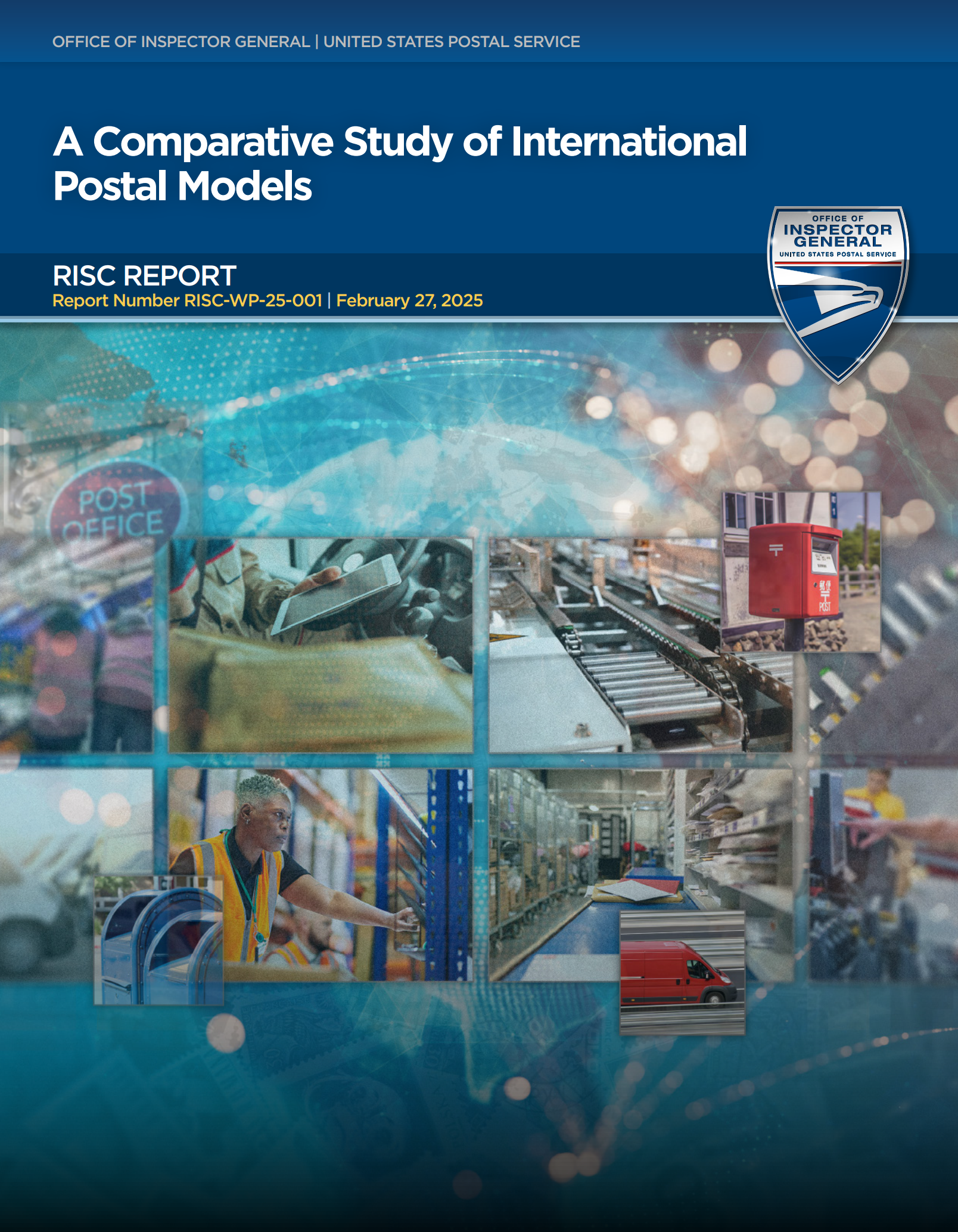A Comparative Study of International Postal Models
— Research and Insights Solution Center —
United States Postal Service Office of Inspector General

Governments around the world have established widely different postal models — combinations of public missions, commercial freedoms, privileges, and legal statuses — designed to enable postal operators to meet their obligations and operate in a financially sustainable manner.
The OIG compared postal models across a selection of 26 posts: the U.S. Postal Service and 25 foreign national postal operators.
Postal Revenue Sources
Most posts in our sample have the legal flexibility to diversify into nonpostal businesses.
The Postal Service
Received 94 Percent of its Revenue
from Mail and Parcels in 2023
The Postal Service is legally restricted to the provision of postal products and services, except for a limited set of grandfathered nonpostal services.
About half of the posts in our sample also obtain a majority of their revenue from mail and parcels.
Many Other Posts Offer Diversified Services
The other half of posts in our sample have diversified revenue sources by offering products and services beyond mail and parcels, such as financial services and logistics.
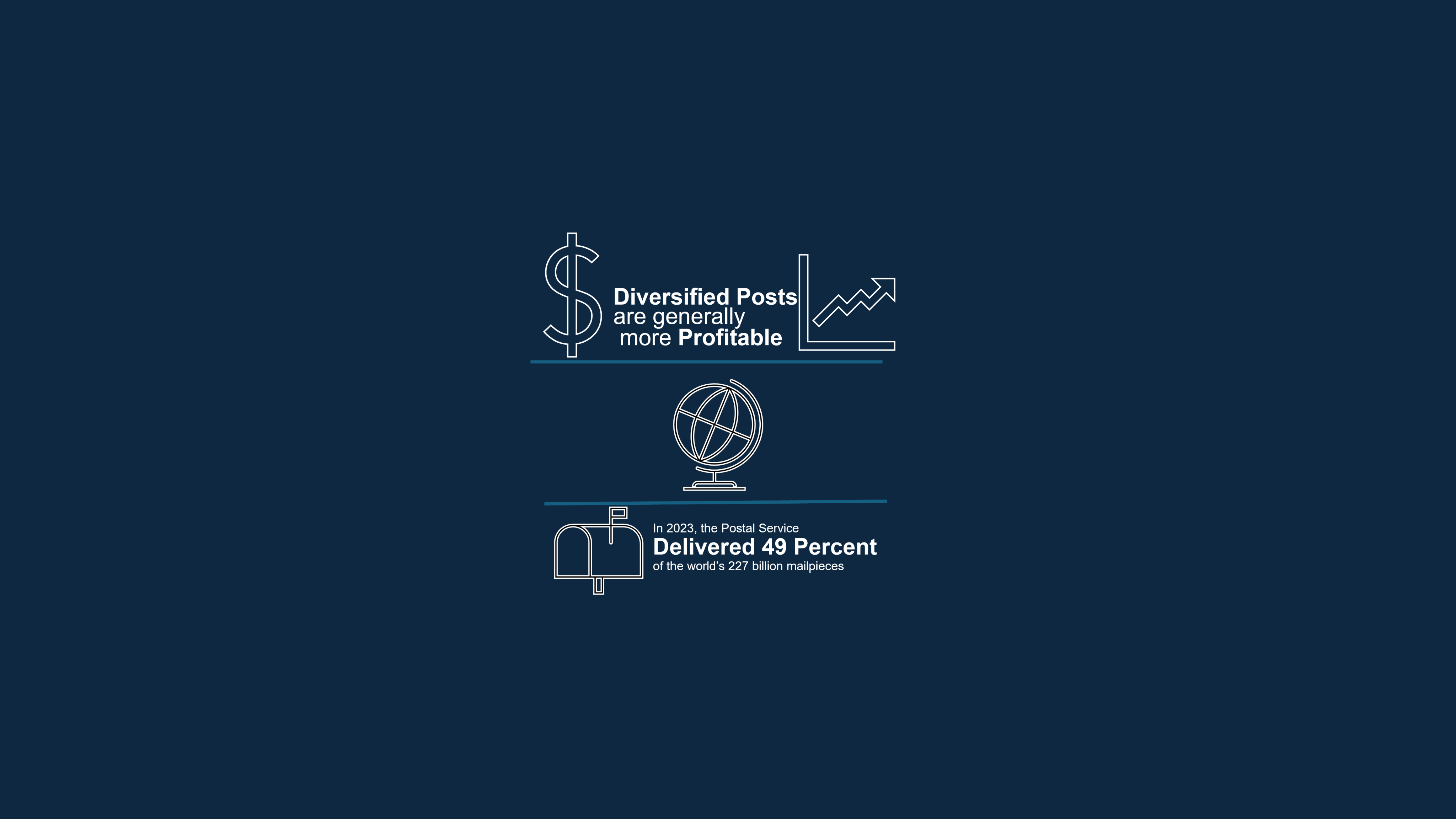
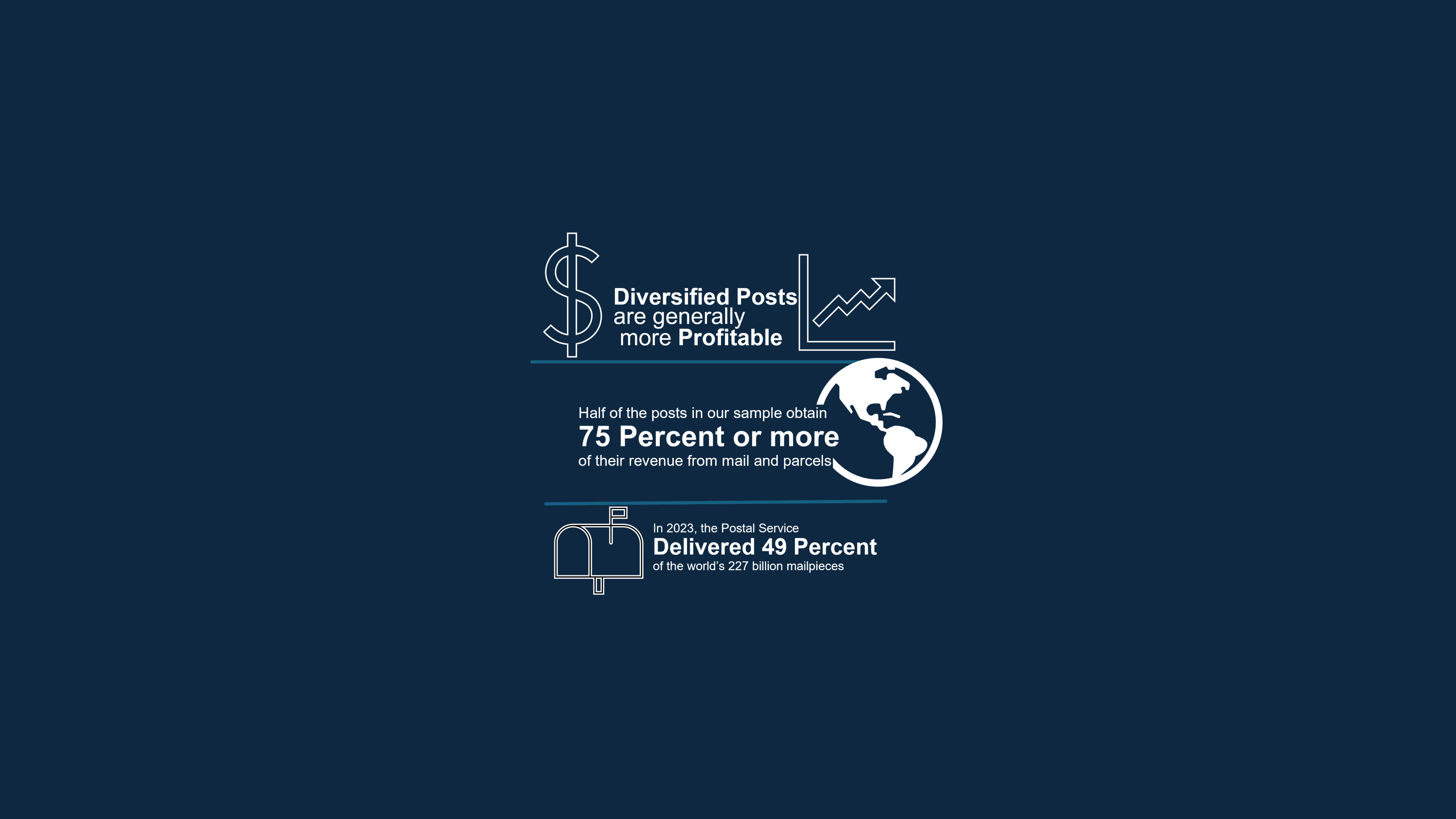
Universal Service Obligation


The main public service mission of posts around the world is the universal service obligation (USO), or a collection of requirements meant to ensure that all citizens and businesses receive a mandated minimum level of service at an affordable price, wherever they live or work.
The USO may be defined by a variety of sources including national legislation, government regulations, international agreements, and, in some cases, the national post itself.

Flexibility and Constraints
Laws and regulations sometimes give the Postal Service more flexibility than its international peers to fulfill its USO, while at other times, they make USPS’s model more constrained than those of other posts worldwide.
Greater Flexibility
U.S. law grants the Postal Service some flexibility to adjust key parameters, such as the size of its retail network and service standards, to balance service quality with financial sustainability.
More Constraints
The Postal Service is legally required to operate under a price cap and USO that apply to a broader range of products. It also has a mandated six-day delivery schedule while many other posts have more flexible delivery arrangements.




Price Setting Flexibility
|
USPS |
Most Other Countries |
|
Prices for mail and parcels are subject to prior review and approval by the Postal Regulatory Commission (PRC), with price caps on mail linked to inflation. |
Prices are often subject to government oversight; most require regulator approval for letter prices, with mechanisms ranging from price caps to minimal oversight. |
Retail Flexibility
|
USPS |
Most Other Countries |
|
Laws prevent closure of small post offices for only financial reasons but do not mandate a number of outlets. |
Mandate a minimum number or density criteria for outlets. |
Service Standards
|
USPS |
Most Other Countries |
|
No government-mandated standards; USPS consults with the PRC, but its advisory opinions are non-binding. |
Many governments set specific service standards for USO products. |




Government Funding
Of the USO and Other Public Service Missions
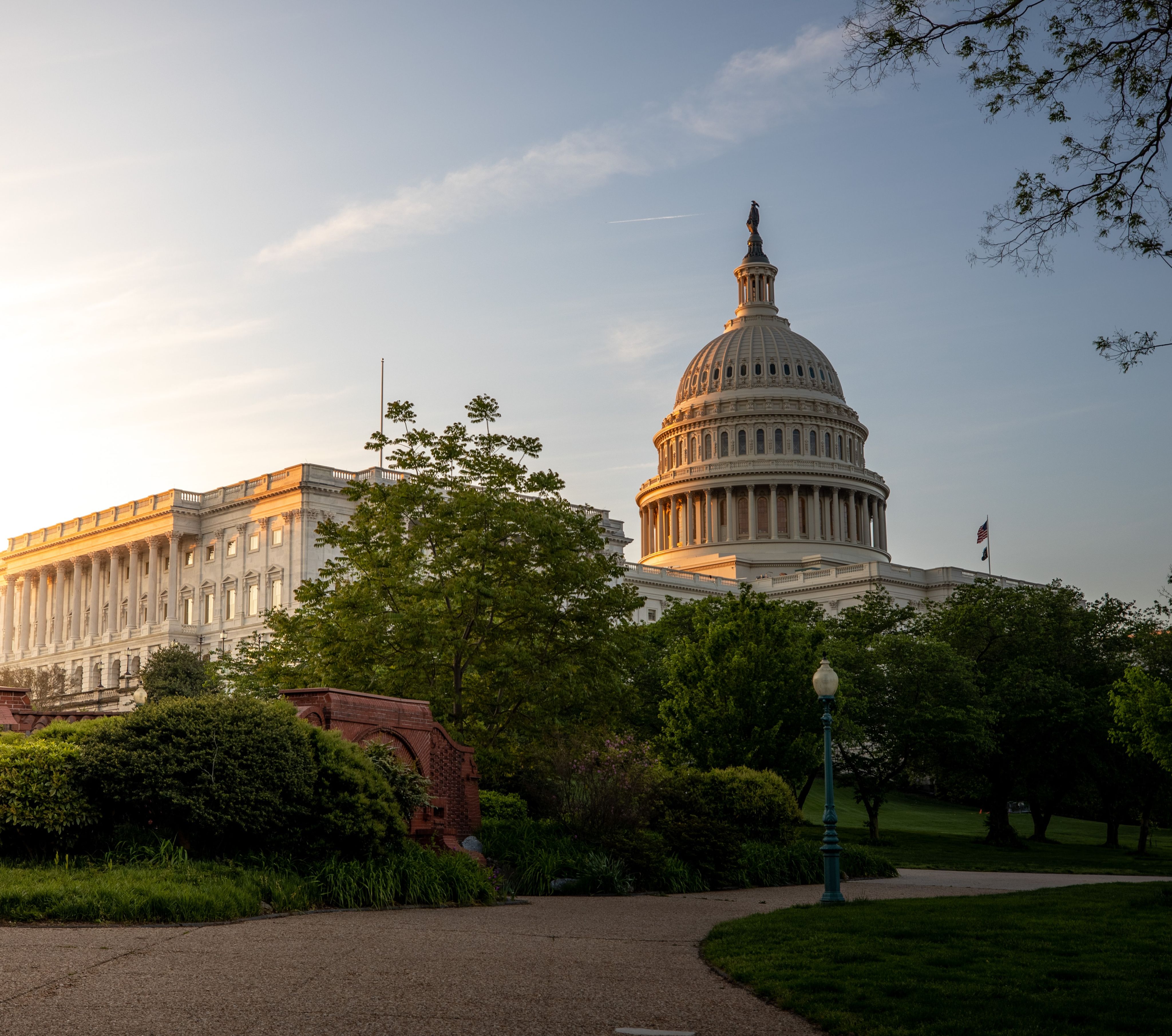
The Postal Service Receives Less Than 0.1 Percent of its Revenue in Government Appropriations
In the United States, limited appropriated funds cover the cost of free postage for blind and disabled persons, overseas voting, and service in three Pacific Island territories. USPS has also received funding to modernize its fleet with electric vehicles and to support operations during the COVID-19 pandemic.
In Europe
|
Government Funding |
No Significant Government Funding |
|---|---|
|
Belgium France Ireland Italy Norway Poland Spain UK (Post Office Ltd) |
Austria Finland Germany Netherlands Russia Sweden Switzerland UK (Royal Mail) |
Asia-Pacific, Oceania
|
Government Funding |
No Significant Government Funding |
|
India (for all operations) |
Australia Japan Vietnam |
North and South America
|
No Significant Government Funding |
|
Brazil Canada |
Top Government Funding Received by Posts
Funding received as a percentage of total revenue for 2023 across a subset of our sample.
Includes only funding provided to cover the cost of the USO and any other public service missions.
*Percentage based on available data from 2022.
Business and Commercial Flexibility

While the legal status of a postal operator (government-owned or private corporation) does not directly affect the scope or public funding of its universal service obligation, it does influence how freely a post can operate its business.

Legal Status and Degree of Privatization
In our sample, most posts can be categorized as either private corporations or state-owned enterprises.
Private Corporations
The 15 posts in our sample that operate as private corporations generally have greater commercial freedom than government-owned posts to streamline costs, manage pension funds, and borrow money for capital investments.
State-Owned Enterprises
Like Canada Post and Swiss Post, USPS is subject to debt caps that may constrain its capital expenditures. However, the U.S. government does not define or direct the Postal Service’s overall business strategy.
Ensuring Financial Sustainability


Postal operators universally contend with declining mail volumes and increasing competition in parcel delivery.
In 2023, about half of the posts in our sample reported financial losses, including the Postal Service.
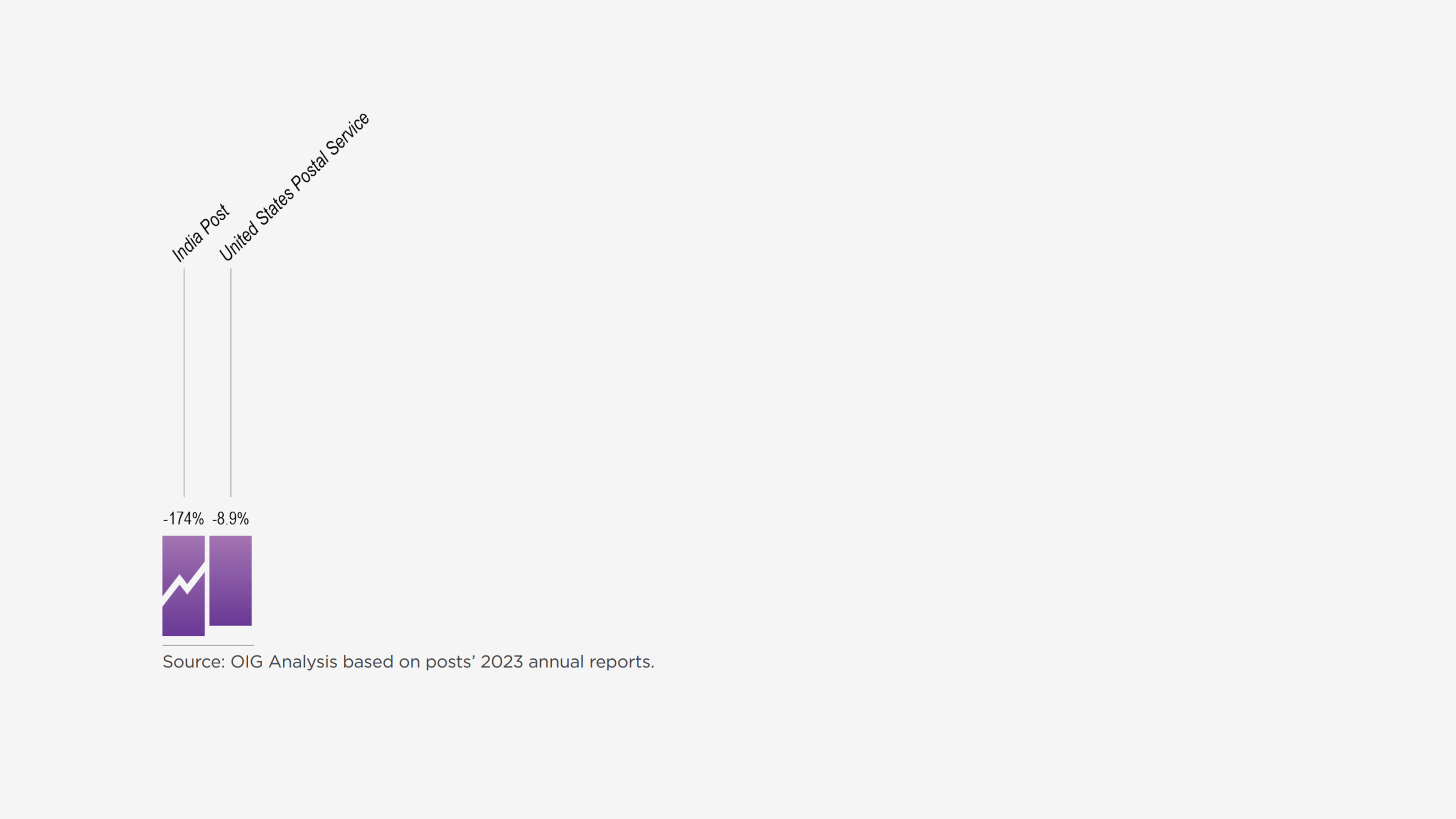
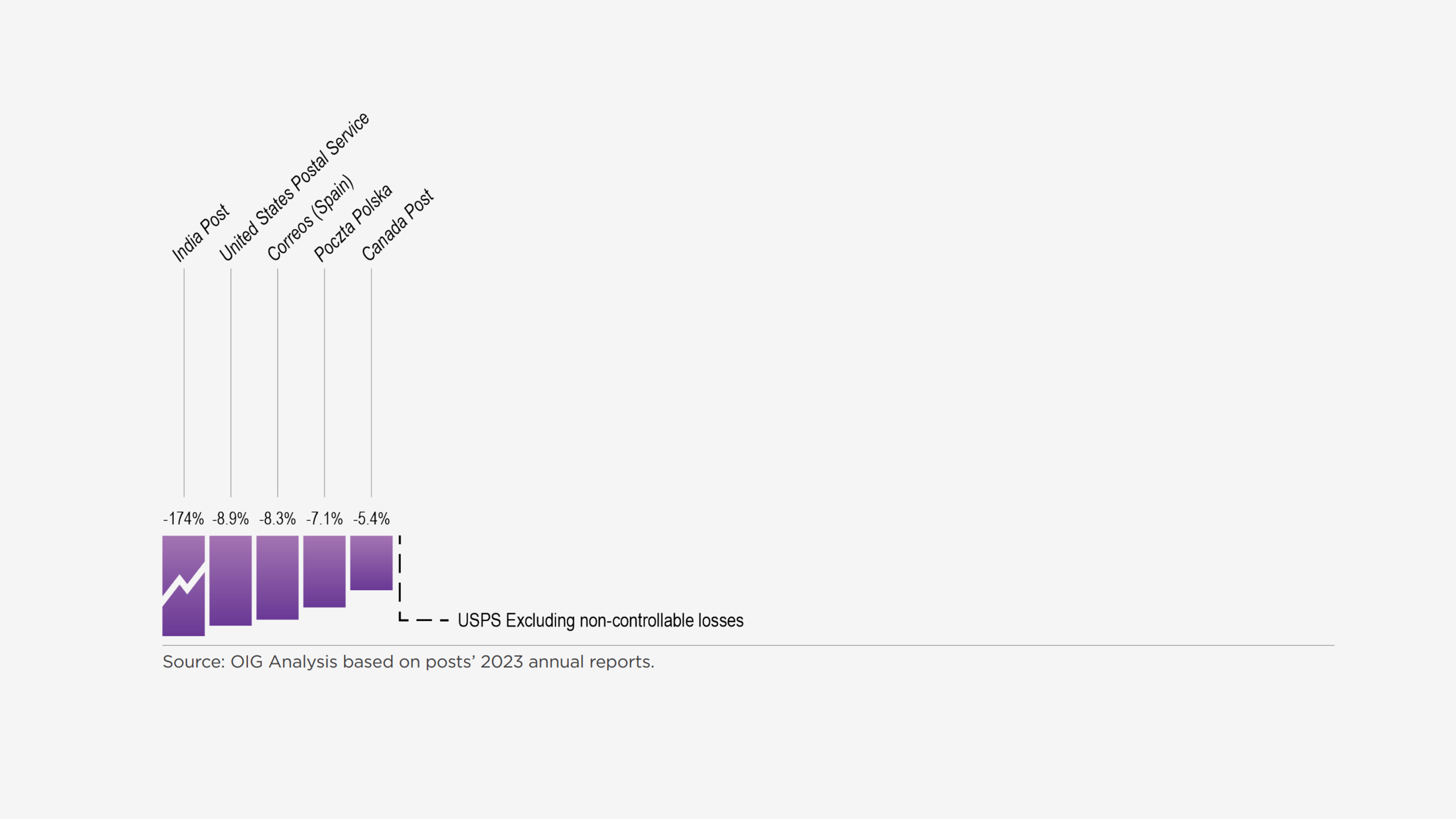
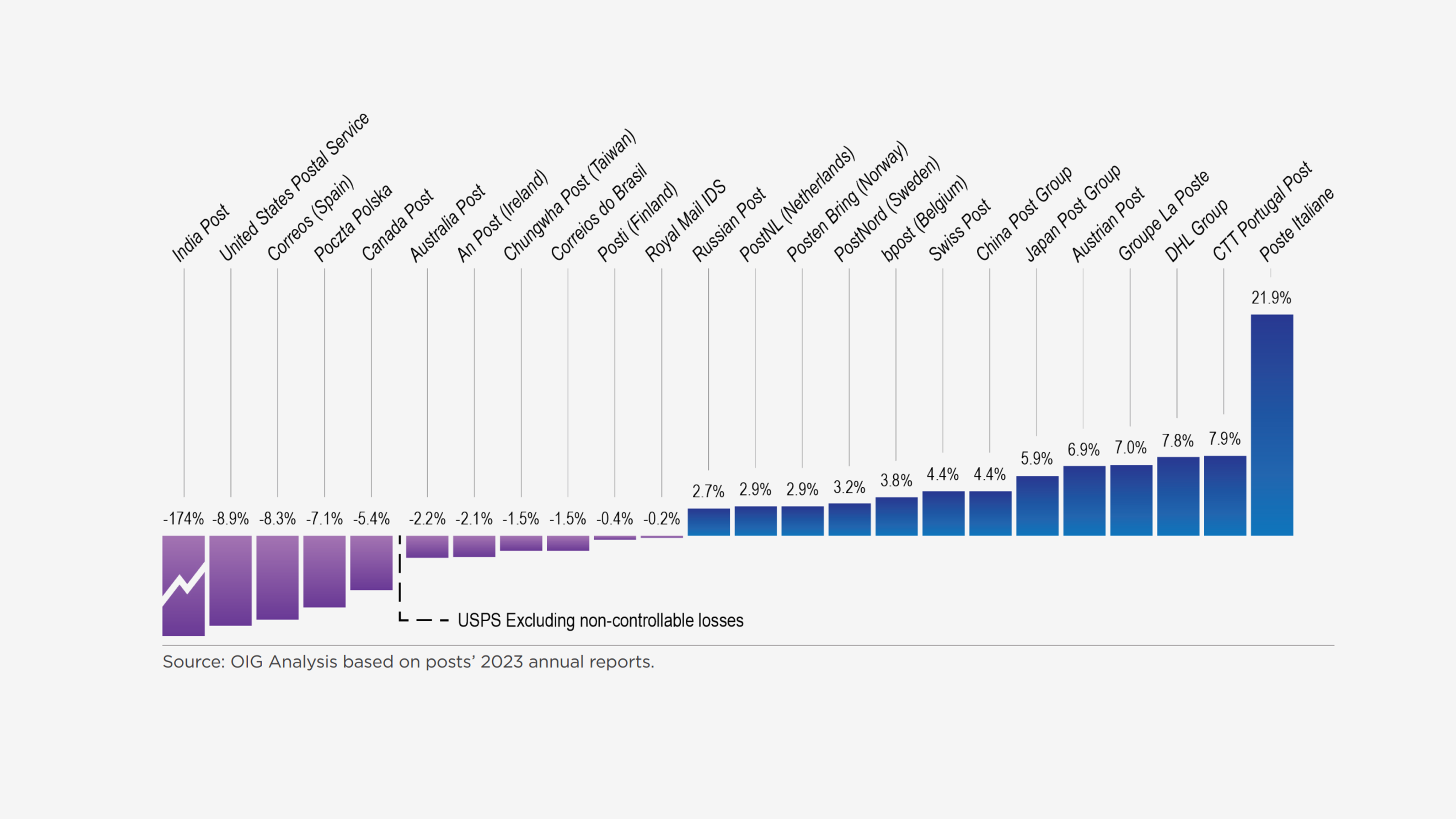
The Postal Service had an Earnings Before Interest and Taxes (EBIT) margin of -8.9 in 2023.
Removing non-controllable losses, the Postal Service would have achieved a -3.6 percent EBIT margin.
Long-term sustainability requires continuous adaptation to market conditions, regulatory environments, and consumer behavior, with diversification and legal status playing key roles in profitability.
Financial profitability, while critical, is not the sole measure of the relevance of a postal model. The Universal Postal Union, for example, ranks postal operators worldwide based on their contributions to their country’s societal and economic progress. These rankings show that posts that are financially challenged can still rank highly — as USPS does — in terms of the value they provide to their countries’ development. This underscores the multifaceted role of postal operators in their respective countries.
Keeping Postal Models Profitable and Relevant
No single postal model guarantees sustained long-term success without continuous adjustments. The relevance of each postal model hinges in fact on the posts’ and governments’ ability to adjust the model to evolving societal needs and market conditions.
While many countries privatized their posts between 2000 and 2015, very few governments are pursuing structural overhaul of their models today. Most operators prioritize changes within their existing frameworks that combine streamlining operations and pursuing new business in markets adjacent to postal services. Many posts are also seeking legislative reforms to alleviate regulatory and financial burdens.
In this respect, a number of posts are seeking a reduction of the USO or the granting of appropriated funds to make their missions more financially sustainable.
Additional Resources:
White Paper: Business or Public Service?
White Paper: The Price of a Stamp
The Price of a Stamp: An International Comparison | Office of Inspector General OIG
White Paper: Variations and Trends in Postal Regulatory Oversight
Variations and Trends in Postal Regulatory Oversight | Office of Inspector General OIG
Contact us
For media inquiries, please email press@uspsoig.gov










